A concise approach to diagnosing and monitoring the condition of any building.
Imagingfor residential, industrial and commercial applications
Meltech THERMAL IMAGING offers a concise approach to diagnosing and monitoring the condition of any building. Perfect for residential, industrial or commercial applications, our certified thermographers use this innovative and non-invasive infrared technology to diagnose the problem and deliver solutions that will save you time, money and energy.
As easy as 1,2,3
for your commercial
building
Step 1
AT YOUR DOOR
Our team of
Certified Thermographers will bring immediate results to any building on the spot, regardless of the dimensions of the commercial building we need to scan.
Step 2
INFRARED IMAGING SOLUTIONS
Our Infrared Imaging Solutions provide a non-invasive approach to diagnosing the condition of any building. Our technicians will scan your structure for accurate thermal readings to ensure the greatest return on investment.
Step 3
DIAGNOSTIC REPORTING
Our professional diagnostic reporting system educates our clients on potential problems while providing concrete solutions.
As easy as 1,2,3 for your residential
building
Step 1
AT YOUR DOOR
Right to your door, our team of Certified Thermographers will get the answers you need in order to solve the problem now.
Step 2
INFRARED IMAGING SOLUTIONS
Wonder if your home is energy-efficient? Concerned with your electrical system? Our technicians will scan your house to verify if there are any problems to solve.
Step 3
DIAGNOSTIC REPORTING
Our professional diagnostic reporting system educates our customers on potential problems while providing concrete solutions. We aim to please!
Home saving solutions
List of Services
-
Energy-Saving TipsList Item 1
- Use compact fluorescent light bulbs
- Air dry dishes, instead of using your dishwashers' drying cycle
- Turn off your computer and monitor when not in use
- Lower the thermostat on your hot water heater to 120oF (49oC)
- Take short showers, instead of baths
- Wash only full loads of dishes and clothes
-
Heating TipsList Item 2
- Clean or replace filters on furnaces once a month or as needed
- Clean warm-air registers, baseboard heaters, and radiators as needed; make sure they're not blocked by furniture, carpeting, or drapes
- Bleed trapped air from hot-water radiators once or twice a season; if in doubt about how to perform this task, call a professional
- During the heating season, keep the draperies and shades on your southfacing window open during the day, to allow the sunlight to enter your home and closed at night to reduce the chill you may feel from cold windows
-
Water Heating TipsList Item 3
- Install aerating, low-flow faucets and showerheads
- Repair leaky faucets promptly; a leaky faucet wastes gallons of water in a short period of time
- Drain a quart of water from your water tank every 3 months to remove sediment that impedes heat transfer and lowers the efficiency of your heater. The type of water tank you have determines the steps to take, so follow the manufacturer's advice
-
Winterize your WindowsList Item 4
- You can use a heavy-duty, clear plastic sheet on a frame or tape clear plastic film to the inside of your window frames during the cold winter months. Remember, the plastic must be sealed tighly to the frame to help reduce infiltrations
- Install tight-fitting, insulating window shades on windows that feel drafty after weatherizing
- Close your curtains and shades at night; open them during the day
-
Shopping for new windows
- Look for energy efficient windows
- Remember, the lower the U-value, the better the insulation. In colder climates, a U-value of .35 or below is recommended. These windows have at least double glazing and low-e coating
-
Lighting Tips
- Turn off light in any room you're not using, or consider installing timers, photo cells, or occupancy sensors to reduce the amount of time your lights are on
- Use task lighting; instead of brightly lighting an entire room, focus the light where you need it. For example, use fluorescent under-cabinet lighting for kitchen sinks and countertops under cabinets
- Use outdoor lights with a photocell unit or a motion sensor so they will turn on only at night, or when someone is present. A combined photocell and motion sensor will increase your energy savings even more
-
Laundering
- Wash with cold water whenever possible
- Don't overload dryers. Overloaded dryers use more energy, cause clothes to wrinkle so they may need to be ironed and wears out clothes more quickly
- Use suds savers and front-loading washers for maximum efficiency
- Always adjust the water level to fit load size. Overloaded washers don't clean clothes as effectively so they even may need to be rewashed
- Clean the lint filter after each drying cycle to maintain dryer efficiency
-
Refrigerating
- Test the tightness of the door seal on refrigerators and freezers. If the seal doesn't tightly hold a dollar bill when the door is closed, it's probably time to adjust or replace the gasket
- Replace old refrigerators. A 1980s-era refrigerator will cost up to 75 percent more to operate than a new super-efficient model
- For greatest efficiency, set refrigerators at 40oF (4oC) and freezers at 0oF (-18oC)
-
Cooking
- Use your oven instead of your cook top to cut cooking costs. Surface units heat continuously, but an insulated oven normally heats one-third of the time it's in use
- Don't peek. Cooking temperatures can drop as much as 50 degrees every time the oven door is opened, causing the oven to reheat
- Use the oven's self-cleaning cycle only for big cleaning jobs. Start the cycle while the oven is still hot from baking
- Use small appliances such as crockpots, electric frying pan, toaster ovens, and microwave ovens to save when cooking
Contact Us
We’d love to hear from you. Call us at (506) 850-8324
or send us a message using the form below and we’ll get back to you as soon as we can.



